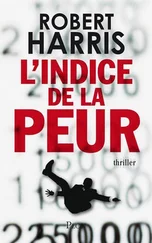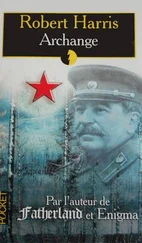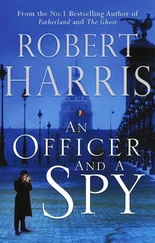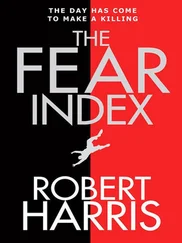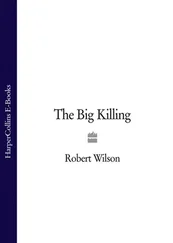But Foulkes’s dreams of triumph were overtaken by events. In March 1918, having concluded peace with Russia, a much-strengthened German army was able to launch its own great offensive in the west. The Allies were subjected to a hurricane bombardment from over 4,000 guns. With the IG producing a thousand tons of mustard gas a month, the Germans were in a position literally to drench the British and French with gas.
On four successive nights, from 10 to 13 March, the Cambrai Salient was blanketed with 150,000 rounds of Yellow Cross shell. Later, 20,000 shells were fired in the course of fifteen hours into the village of Armentieres; liquid mustard ran like rain water in the gutters of the streets. Trying to survive for hours at a time on the stale air of the respirator was almost unendurable. The gas was everywhere. It evaporated quickly in the warm spring weather and penetrated every crevice. It waited until sweating men loosened their clothing or wiped the perspiration from their eyes – and then it struck. In the week ending on 16 March, 6,195 gas cases were admitted to medical units; the following week saw the admission of a further 6,874; and during the week ending on 13 April, the British suffered what was possibly their worst ever period, as 7,000 gassed men flooded into the field hospitals. 46
It was the week of Field Marshal Haig’s famous ‘Special Order of the Day’ of 11 April: ‘There is no course open to us but to fight it out. Every position must be held to the last man: there must be no retirement. With our backs to the wall and believing in the justice of our cause each one of us must fight on to the end.’ Over the next few weeks, 200 German divisions advanced over forty miles, capturing 80,000 prisoners and 1,000 guns. Hodgkin, retreating day after day, wrote that he felt as though he was ‘living on the side of a precipice’. An enemy attack could come ‘at any moment of the day or night. The bombing season has begun again with the new moon and the air has been full of enemy aeroplanes all this evening.’
The success of the attack owed much to mustard gas. Ammunition dumps later captured by the Allies were revealed to be as much as 50 per cent stocked with chemical weapons. The Americans alone suffered 70,000 casualties from mustard gas – more than a quarter of the US Army’s over-all casualties for the entire war.
In advancing so far, however, the Germans had sown the seeds of their own defeat. In July and August the Allies were able to strike back at the over-extended German positions. Their armies too were heavily dependent on chemicals. By August the British and Americans were increasing the proportion of gas-filled munitions ordered from the factories to between 20 and 30 per cent of total ammunition supplied. That ratio was planned to be increased still further. By 1919 it is possible that chemicals would have come to rival, even in some cases outstrip, high explosives. In June the French acquired mustard gas, and in September, in the dying days of the war, the first significant supplies of British-charged mustard shells reached the battlefield. By then it was all nearly over.
Yet the British use of mustard gas is significant for one incident alone. On 14 October, during the final Allied offensive, British mustard shells rained down into a shattered Belgian village called Werwick, causing heavy casualties among the exhausted 16th Bavarian Reserve Infantry. A few days before the Armistice, a trainload of the men wounded in the Werwick attack were shipped back to Germany. Among them, blinded and humiliated, was a twenty-nine-year-old corporal, whose injuries helped determine him to avenge the German defeat: Adolf Hitler. 47
Fearing that he would be tried as a war criminal, Fritz Haber donned a false beard and as the war ended he took off for Switzerland: so too did Carl Duisberg, head of the German chemical industry. Neither in the end was tried. Indeed in 1919 Haber was honoured with the Nobel Prize for his work on the synthesis of ammonia, a decision which outraged the scientific world, the New York Times asking – if Haber got the Chemistry Prize – ‘Why the Nobel prize for idealistic and imaginative literature was not given to the man who wrote General Ludendorff’s daily communiqués?’ 48
Between them, Haber and Duisberg had changed the history of warfare. At least 1.3 million men had been wounded by gas; 91,000 of them had died. Germany, France and Britain had all suffered around 200,000 casualties, and Russia more than double that figure. An estimated 113,000 tons of chemicals had been used. 49
Had the war gone into a sixth year, there is no doubt that these figures would have been vastly increased. All the belligerents had new weapons about to come into service. In the spring of 1918 a team based at the Catholic University, Washington DC, discovered Lewisite: faster acting than mustard gas it caused ‘immediate excruciating pain upon striking the eye, a stinging pain in the skin, and sneezing, coughing, pain and tightness in the chest on inhalation, often accompanied by nausea and vomiting.’ 50The first batch of 150 tons of Lewisite was at sea, on its way to Europe when the Armistice was signed. The British had the ‘M device’, which generated an ‘arsenical smoke’ code-named DA, capable of penetrating even the most effective German gas mask within fifteen seconds. Within a minute the victim would be in agony. Haldane described the pain in the head ‘as like that caused when fresh water gets into the nose when breathing, but infinitely more severe. These symptoms are accompanied by the most appalling mental distress and misery. Some soldiers poisoned by these substances had to be prevented from committing suicide; others temporarily went raving mad, and tried to burrow into the ground to escape from imaginary pursuers.’ 51For their part the Germans had perfected a new projector – the Gaswerfer 1918 – capable of hurling canisters filled with phosgene-impregnated pumice granules over a distance of up to two miles. Chemical warfare had come a very long way from tear gas grenades and simple cylinders of chlorine. Weapons which four years before had been beyond the pale of civilized warfare now employed vast numbers of scientists, technicians and soldiers in large research and development installations.
At Edgewood Arsenal in the United States, the Americans had ‘probably the largest research organisation ever assembled for one specific object’: 521,200 technical men and 700 service assistants researching into more than 4,000 potentially poisonous substances. It was a scientific project on a scale unrivalled until the Manhattan Project twenty-five years later. The entire arsenal had cost around $40 million, and within its walls were 218 manufacturing buildings, seventy-nine other permanent structures, twenty-eight miles of railway, fifteen miles of roadway and eleven miles of high tension electrical transmission lines. Its factories were capable of producing 200,000 chemical bombs and shells per day.
Institutions on this scale are not easily disbanded. The Americans in particular, having suffered such a high proportion of gas casualties, were not keen to turn their backs on the potentialities of chemical warfare. Victor Lefebure recorded landing in America early in 1920 to ‘find New York plastered with recruiting posters setting forth the various reasons why Americans should join their Chemical Warfare Service’. 53The strength and skill of the US prochemical warfare lobby in resisting disarmament, first shown at the time of the Armistice, continued to overcome the periodic hostility of successive Presidents, senators, Chiefs of Staff and peace groups for the next seventy years.
In Britain, the Government appointed the Holland Committee to report on chemical warfare and suggest what the country’s future policy should be. Its members – who included Foulkes, now promoted to General – met in May 1919 and agreed ‘with no shadow of doubt’ that ‘gas is a legitimate weapon in war… and that it will be used in the future may be taken as a foregone conclusion’. 54This decision was not accompanied by any American razzmatazz or propaganda campaign. On the contrary, British gas warfare became subject to a policy of strict official secrecy. Carefully ‘weeded’ files about chemical warfare in the First World War were not released to historians until 1972. An eighteen-year-old wounded in the first phosgene attack would have had to wait until he was seventy-five before he could read about it. War memoirs were also stringently vetted, and even titles were censored. Foulkes had wanted to call his account of the work of the Special Brigade either Frightfulness or Retaliation. Both were considered too provocative by the War Office and the book – which was eventually published in 1936 – was called simply Gas!
Читать дальше

